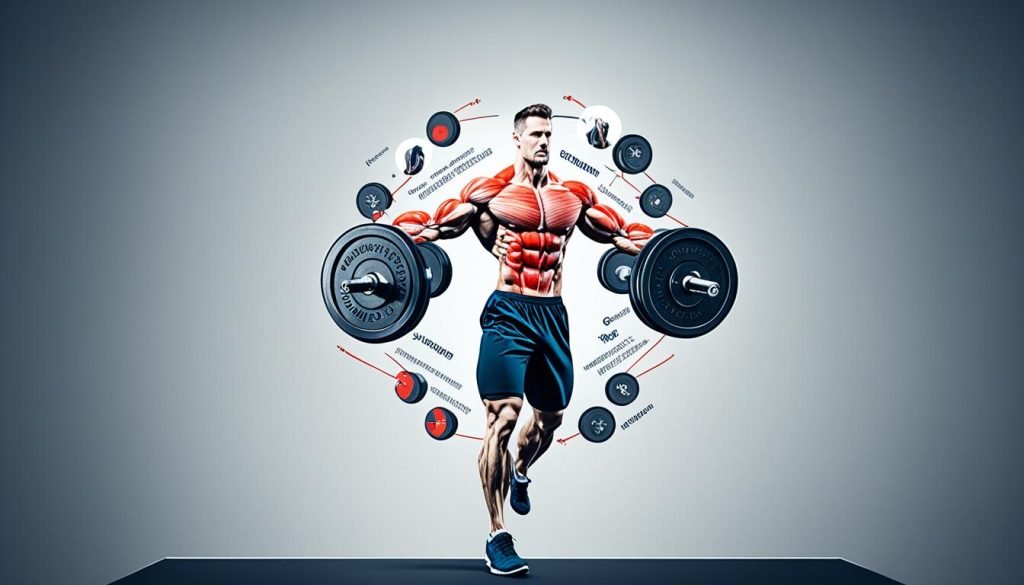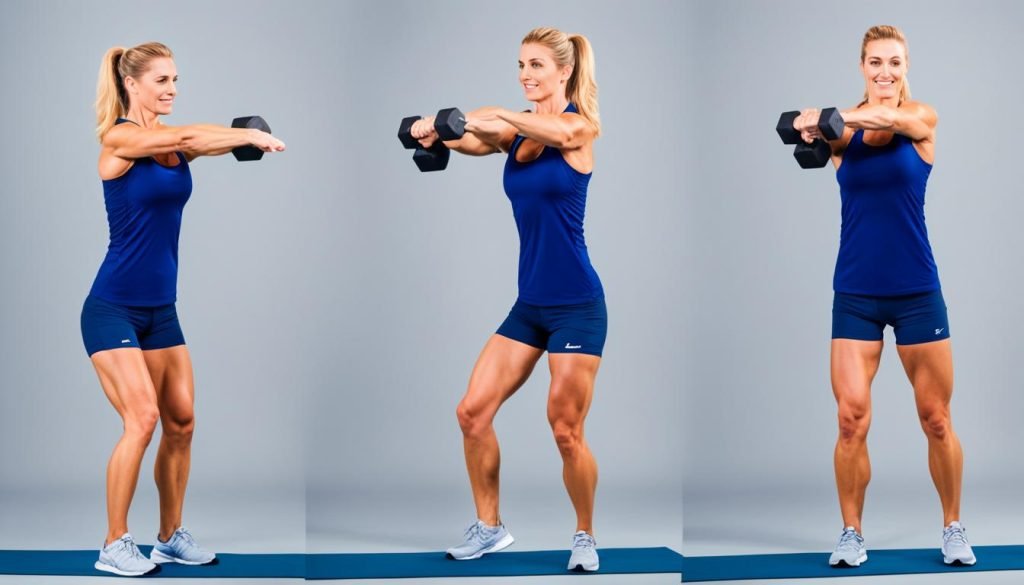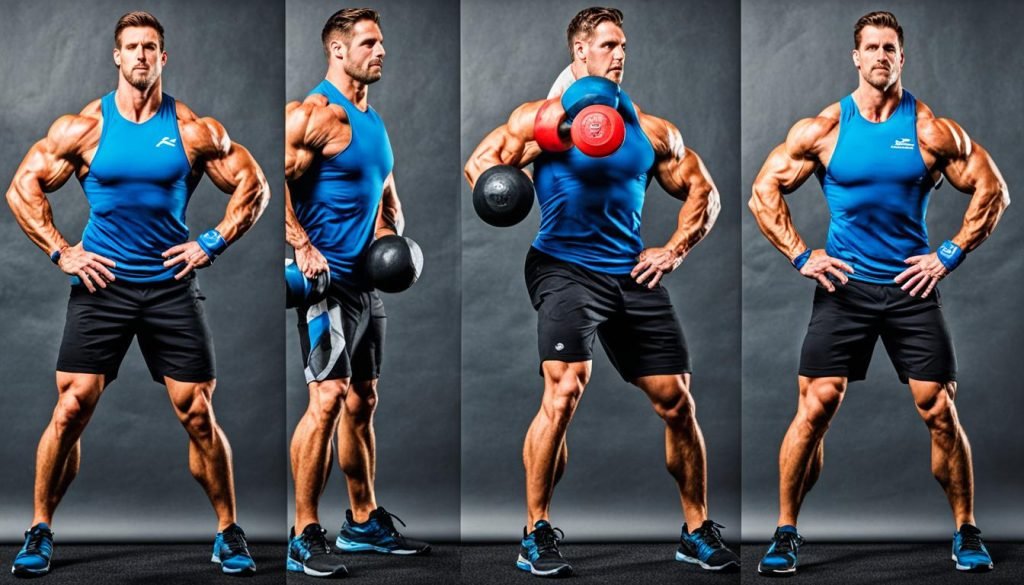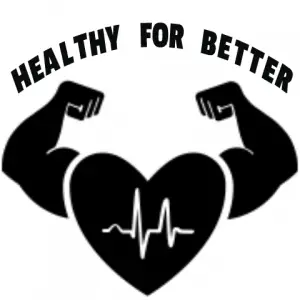Have you ever thought about why dumbbell swings are often left out of traditional workouts? They're a powerful exercise that works your whole body. By adding dumbbell swings to your routine, you get many benefits for strength and heart health. Doing them right also helps avoid injuries and gets you the best results.
Key Takeaways
- Dumbbell swings target multiple muscle groups for balanced strength development.
- They significantly improve core stability and conditioning.
- This exercise enhances cardiovascular fitness while building power and strength.
- Proper technique reduces injury risk, making them suitable for various fitness levels.
- Dumbbell swings can be easily integrated into your existing strength training program.
Understanding Dumbbell Swings
To learn how to do dumbbell swings, start by understanding the basics. The movement begins with a stable stance. From there, the hips push forward, sending the dumbbell between the legs and up into the air. This engages many muscle groups.
Mastering hip hinge mechanics and keeping the body aligned is key to the proper technique. Keeping the spine neutral and engaging the core is crucial. The legs are vital for power, showing the importance of exercise fundamentals.
Following these principles boosts performance and lowers injury risk. Breaking the motion into steps helps beginners practice effectively:
- Start with feet shoulder-width apart and knees slightly bent.
- Hinge at the hips, keeping the back straight, and let the dumbbell swing between the legs.
- With one powerful move, push your hips forward to send the dumbbell up to shoulder height.
With regular practice, mastering these elements of dumbbell swings can lead to great benefits for your whole body.
Benefits of Dumbbell Swings for Full-Body Conditioning
Dumbbell swings are great for any full-body workout. They boost your heart rate and burn calories. They're perfect for those looking to lose fat.
This exercise works out big muscles like the hamstrings, glutes, shoulders, and back. It makes muscles stronger and boosts endurance. You also get better balance and coordination as you swing the dumbbells.
Adding dumbbell swings to your workout routine improves muscle strength and heart health. It's a mix of strength and cardio that boosts your overall fitness and health.

| Benefit | Description |
|---|---|
| Calorie Burn | High-intensity exercise promoting effective fat loss. |
| Full-Body Engagement | Targets upper and lower body muscles for comprehensive strength. |
| Improved Balance | Aids in enhancing coordination through dynamic movement. |
| Increased Endurance | Benefits cardiovascular fitness through rigorous workouts. |
Dumbbell Swings Muscles Worked
The dumbbell swing is a powerful exercise that targets many muscle groups. It gives you a full-body workout. Knowing which muscles it works helps you get the most out of it and do it right.
Key Muscle Groups Engaged
When you do dumbbell swings, several important muscle groups get a workout:
- Hamstrings: These muscles help power the swing, especially when you push up.
- Glutes: This group is key for moving your hips and adding force to the swing.
- Shoulders and Upper Back: These muscles help control the weight and keep you stable.
- Core Muscles: Your abs, obliques, and spinal erectors keep your spine stable while swinging.
Core Stability and Strength
Dumbbell swings don't just work your glutes and hamstrings. They also make your core stronger. This is key for better athletic performance and fewer injuries. A strong core helps with everyday tasks and more active activities.
Proper Dumbbell Swing Technique
Learning the right way to do a dumbbell swing is key for a good workout and staying safe. This method makes the exercise better by working out many muscles at once. Here's how to get your dumbbell swing just right:
Step-by-Step Guide to Performing Dumbbell Swings
- Stand with feet a bit wider than shoulder-width apart, holding a dumbbell with both hands.
- Start a squat, lowering the dumbbell between your legs while keeping your back straight and your core tight.
- Push your hips forward, letting the weight swing up in front of you until it reaches shoulder height.
- Let the weight swing back down to where you started, doing it smoothly.
Make sure not to round your back and keep a firm grip on the dumbbell. Paying attention to your form helps avoid injuries and makes your workout more effective.

Dumbbell Swings for Fat Loss
Dumbbell swings are a key part of high-intensity workouts for losing fat. They work many muscle groups at once, which helps burn more calories during and after the workout. This exercise boosts heart health and gets muscles working together.
Adding dumbbell swings to your regular workout helps create a calorie deficit. This is key for losing fat. When you combine this exercise with a healthy diet, you'll see better results over time.

- Targets large muscle groups: Engaging multiple muscles increases overall calorie burning.
- Improves cardiovascular conditioning: Elevates heart rate, fostering better endurance.
- Increases metabolic rate: The high-intensity nature of the workout boosts metabolism post-exercise.
| Fitness Component | Impact of Dumbbell Swings |
|---|---|
| Energy Expenditure | High due to multi-muscle engagement |
| Heart Rate | Increased, enhancing cardiovascular fitness |
| Muscle Groups Active | Legs, core, arms, and shoulders |
| Calories Burned | Significant during and after workouts |
Adding this exercise to your weekly routine can really change the game for your fitness goals.
Incorporating Alternative Exercises
To keep your workouts interesting, it's key to mix up your routine with dumbbell swing alternatives. These exercises work your muscles in new ways, helping you avoid getting bored. A great choice is the one arm dumbbell swing. It's a unique move that boosts grip strength and stability.
Exploring One Arm Dumbbell Swings
One arm dumbbell swings are a great way to improve your fitness. By using one arm at a time, you increase the intensity and work your stabilizer muscles more. Here are some main benefits:
- Improves Grip Strength: This exercise makes you focus more on your grip, which strengthens your hands.
- Unilateral Training: It helps balance muscle work on both sides of your body.
- Enhances Core Stability: Swinging with one arm requires your core to work harder, making it stronger.
Adding one arm dumbbell swings to your workout can really make your conditioning more varied. It will also boost your muscle endurance.

| Benefits | One Arm Dumbbell Swings |
|---|---|
| Grip Strength Enhancement | ✔️ |
| Balance Improvement | ✔️ |
| Core Stability Development | ✔️ |
| Muscle Imbalance Correction | ✔️ |
| Increased Workout Intensity | ✔️ |
Conclusion
Dumbbell swings are a great exercise for a full-body workout. They work many muscle groups at once. This makes them good for building strength, improving endurance, and boosting heart health.
Using the right technique is key to getting the most out of dumbbell swings. It keeps you safe and makes the exercise more effective.
Adding dumbbell swings to your workout can help with losing fat and making your core stronger. Focus on your form and be consistent to get better results. Dumbbell swings are a dynamic exercise that helps you work on fitness from all angles.
Using dumbbell swings in your workouts can lead to lasting health improvements and better stability. They are a powerful tool for your fitness routine. They can be a key part of your workouts and help you make lasting changes in your fitness journey.
FAQ
What muscles are worked during dumbbell swings?
Dumbbell swings work the hamstrings, glutes, shoulders, and upper back. They also engage the core muscles like the abdominals and obliques for stability.
What are the benefits of performing dumbbell swings?
Dumbbell swings boost core stability, endurance, and heart health. They're great for working out the whole body and help burn calories. This makes them a good choice for losing fat.
How do I perform dumbbell swings correctly?
Start by standing with your feet wider than shoulder-width apart. Hold the dumbbell with both hands. Then, lower the dumbbell to your legs in a squat. Push your hips forward to swing the weight up to shoulder height. Keep your spine straight and core tight.
Can dumbbell swings help with fat loss?
Yes, dumbbell swings are a high-energy exercise that helps burn fat. They work many muscles, which increases calorie burn. When combined with a healthy diet, they can help you lose weight.
What are some alternative exercises to dumbbell swings?
Good alternatives include kettlebell swings, barbell swings, and one arm dumbbell swings. These exercises improve grip strength and focus on different muscles. They also promote training on one side of the body.
How do I ensure proper dumbbell swing technique?
Keep your back straight and engage your core. Use your legs for power, not your back. Hold the dumbbell tightly throughout the swing for safety and best results.
Source Links
- What Are the Benefits of Dumbbell Swing Exercises? | Livestrong.com – https://www.livestrong.com/article/426188-what-are-the-benefits-of-dumbbell-swing-exercises/
- Kettlebell Swings: Benefits and How to Do Them Right – https://www.healthline.com/health/fitness/benefits-of-kettle-bell-swings
- How to Do Dumbbell Swings (Form & Benefits) – https://steelsupplements.com/blogs/steel-blog/how-to-do-dumbbell-swings-form-benefits
Recent Posts
It's important to evaluate whether Beachbody On Demand continues to meet your fitness needs as we enter 2025. With a range of workout programs and nutrition plans, the platform claims to cater to...
Just like having a personal trainer at your fingertips, Beachbody On Demand offers you an extensive library of on-demand workout programs accessible anytime, anywhere. This service allows you to...

